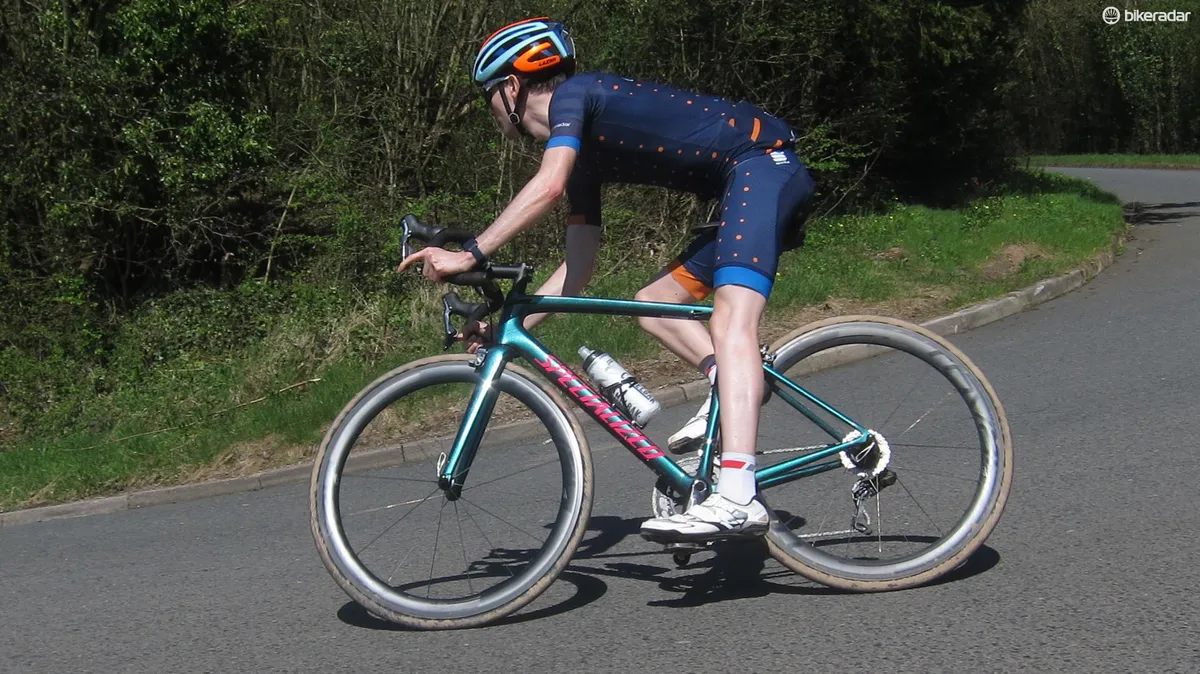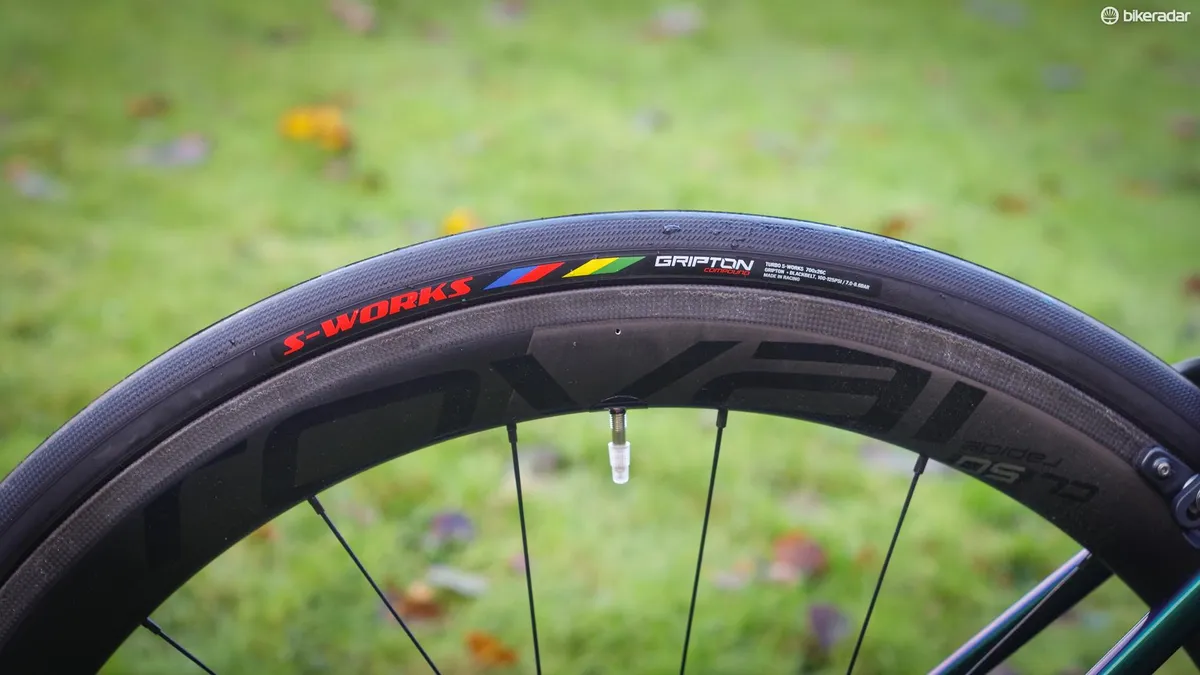I have a 2018 Specialized Tarmac Pro on long-term test and I’m gradually getting to know its every quirk and quality. I introduced the bike in my detailed first look so I won’t bore you by repeating myself, but suffice to say it’s a light and lovely carbon bicycle that’s extremely pretty, and ridiculously pleasant to ride, regardless of your abilities.
Fellow Brits will know how hideous the weather has been in the first few months of this year, and as a result the Tarmac hasn’t had as many outings as I’d have liked.
Things are looking slightly rosier now however, and it’s only taken a single sun-kissed ride to get me excited again to be playing with such a lovely bike.
The build is just about spot on
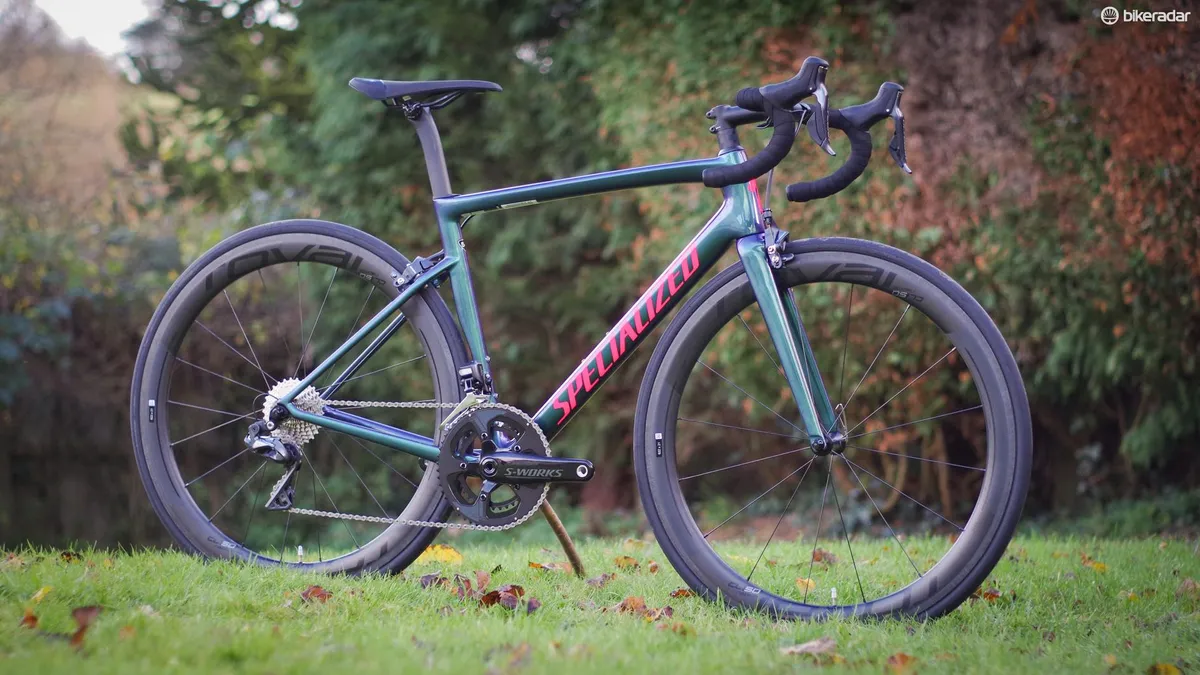
The build is hard to fault and there isn’t really anything I feel a pressing urge to change.
Shimano’s latest iteration of Ultegra Di2 is predictably competent. It still has that old quirk where, if you rest a finger against the shift buttons while riding over bumps, you get a sort of clickety rattle — it’s a tiny thing however, easily remedied with some digital discipline. (Sorry.)
One small but useful improvement is the reach adjustment. Ultegra 6800 used a plastic screw with the durability of melted brie, whereas R8000 has a proper metal one with a hex head that’s much harder to mar.
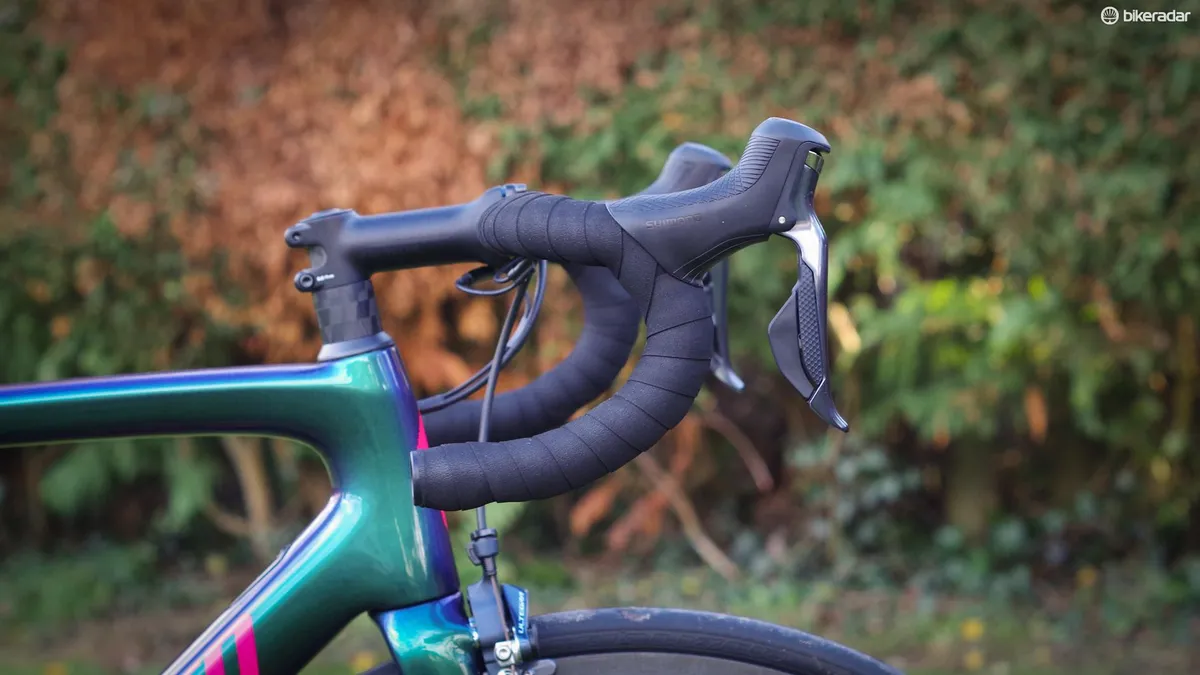
The bar-end Di2 charging port is a welcome improvement too, but I do think Specialized could have tidied up the wiring under the stem a little better.
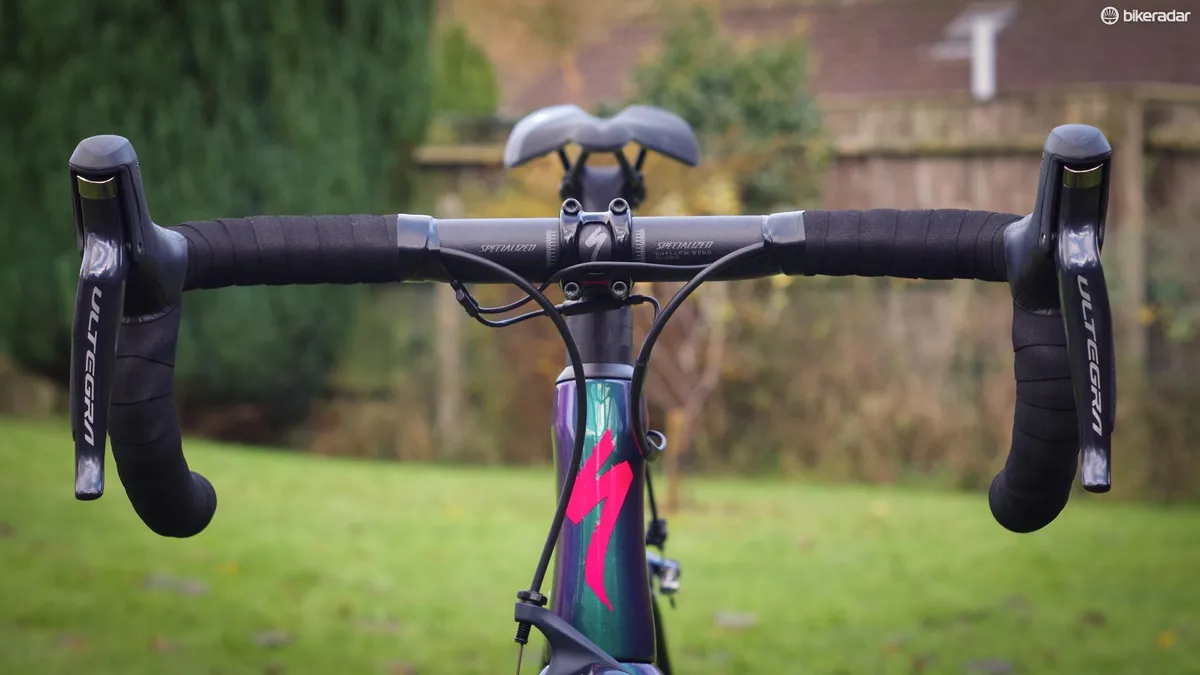
While I’m being critical, it is a little surprising that you don’t get carbon bars on a bike this expensive, but you’ll hardly miss them.
Specialized says this bike is for riders “obsessed with phenomenal performance but [with] a racer's budget” and you could argue that alloy bars fit the brief better, as they’re less likely to be damaged beyond use in a peloton pile-up. Or you might think think Spesh is being cheap — your call.
You might also be wondering what madness would possess someone to spend this much money on a bike with rim brakes these days, but this is not a bike that needs to make apologies for itself.
As it happens, the braking is fine — it’s far better than that of old-school carbon rims, but not as good as, say, the latest Campagnolo rim/pad combo in terms of bite.
The overall braking feel is excellent however, the direct-mount Ultegra brakes really are fantastic.

At my weight, 50mm-deep rims would never be my first choice for general riding, but the Roval CL 50s haven’t proved too scary in moderate winds.
There is a curious weather-vaning effect at times however, which makes the front end of the bike feel oddly light in crosswinds. Rather than tugging the wheel sideways and moving you off line, it’s more like the whole front of the bike is being moved around slightly.
The 26mm S-Works Turbo tyres are fine and they measure close to 28mm wide on these rims, which is a bonus. I can’t help thinking that a set of tan walls would look fabulous however, so I might see about sourcing a set.
The ride is sublime
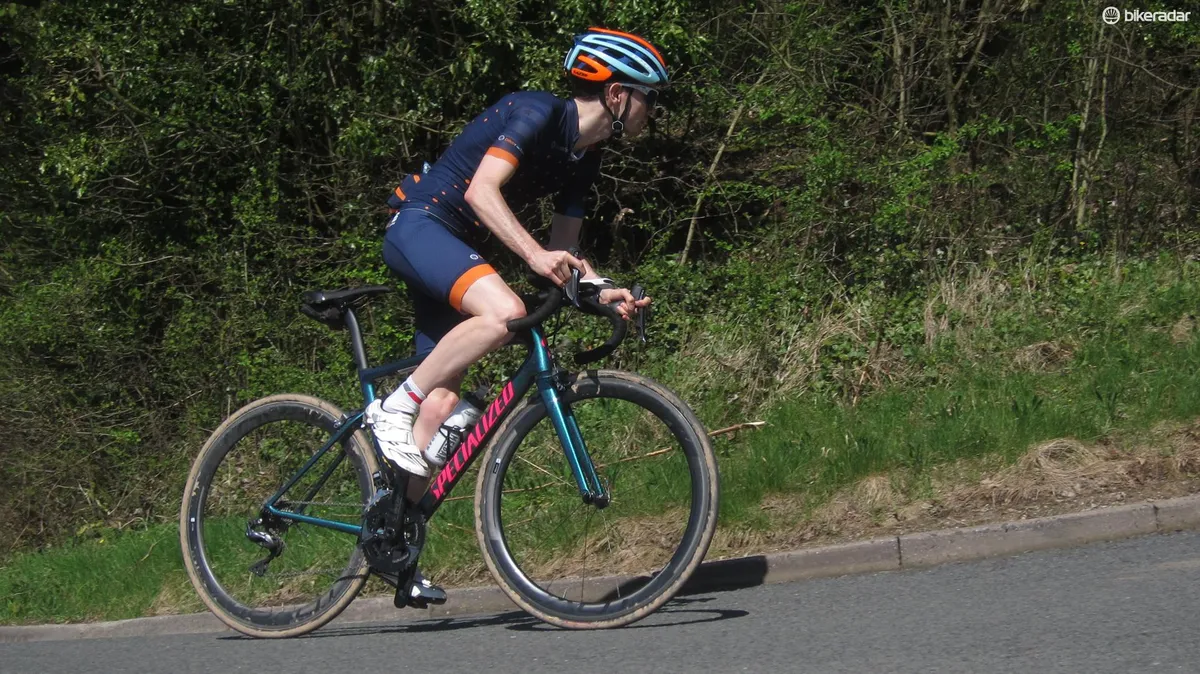
The Tarmac is built for racing and I cannot pretend otherwise. I am not fit enough, flexible enough or competitive enough to take full advantage of its abilities, but that doesn’t prevent me from appreciating them.
It’s very stiff and very smooth. It’s also a pretty damned firm ride on its mid-depth carbon clinchers, making for one of those rides that’s rewarding when you’re pressing on, but not necessarily the most relaxing. I don’t care though, as it’s such a ridiculously together ride.
Like previous high-end Tarmacs, it’s extremely precise, one of those bikes that is a pure unadulterated pleasure to throw down a hill, arcing through corners with the outside pedal loaded up. And, of course, it climbs brilliantly too, thanks to a frame that feels taut and weightless.
Early verdict – an irrational purchase that delights completely
There is something quite perverse about spending £5,400 on a bike with rim brakes in 2018, but I can’t help but be glad that this thing exists.
It’s achingly pretty and a joy to ride. Do you really need that S-Works?
